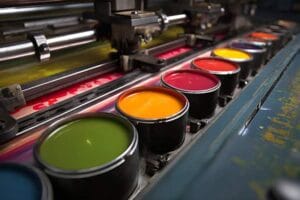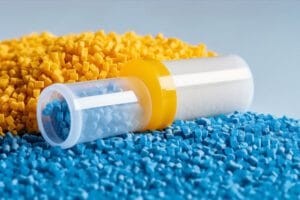What is Curing Agent or Hardener?
Curing agent (sometimes also referred to as hardener ) is a chemical substance added to coatings, adhesives, resins or other materials to promote polymerization or cross-linking reactions in them and change from liquid/paste form into solid form for curing purposes – creating curing substances with specific physical and chemical resistance properties.
Principle of Curing Agents
Curing agents enhance mechanical strength, heat resistance and chemical resistance of materials by initiating or speeding up chemical reactions within polymer networks that create three-dimensional network structures. Based on materials and application scenarios, curing agents may be classified in several ways:
Reactive curing agents: Reactive curing agents create cross-linked structures by chemically reacting with functional groups in the substrate. For instance, epoxy curing agents typically consist of amines or anhydrides which react with epoxy groups in order to form three-dimensional mesh structures.
Catalytic Curing Agents: Catalytic curing agents accelerate the curing process by catalyzing chemical reactions within the substrate. Acid catalysts may be employed to accelerate polyurethane coating curing reactions more rapidly.
Free radical initiators: Free radical initiators are curing agents used to initiate free radical polymerization reactions, such as peroxide curing agents for curing unsaturated polyester resins.
Application of curing agents
Curing agents are used widely in many industrial fields. Depending on the substrate and application, selecting the right curing agents can enhance the performance of a material.
As an example:
Coatings Curing agents increase the hardness of epoxy and polyurethane by encouraging cross-linking reactions.
Adhesives Hardeners can be used to provide high strength bonding properties in the aerospace, automotive and construction industries.
Composites Hardeners are a critical component of carbon and glass fibre reinforced composites. They improve the mechanical properties by creating a stable matrix.
Electronic Materials:In the electronic packaging materials used, curing agents improve electrical insulation properties, thermal stability and protect electronic components against environmental influences.
Curing Agent Selection
The following factors should be considered when selecting a curing agent:
Types of substrates:Different types of curing agent are required for different types of substrates(e.g. epoxy, polyurethane, unsaturated polyester, etc.).
Curing Conditions:These conditions include temperature, humidity and time of curing.
Final performance requirements:Curing Agents are selected according the application requirements in order to ensure the final product has all the properties required, including mechanical strength, heat resistance, chemical resistance and others.
Safety and environmental friendliness are important factors when selecting a curing agent.
What does a crosslinker do?
What’s the difference between a curing agent and a crosslinker?
Crosslinkers are substances that create chemical bonds between polymer molecule to increase mechanical strength, heat resistance, and chemical stability by creating a mesh-like structure in three dimensions. They are commonly used for rubber, coatings, and composites.
A curing agent, on the contrary, is a substance that initiates or speeds up a polymerization process, transforming a material from a paste or liquid to a solid to achieve desired durability and hardness. It is commonly used in resin systems, coatings, adhesives, and coatings. Crosslinkers are primarily designed to improve the properties and structure of polymers, while curing agent is used to finish the curing process and achieve the desired properties.
But sometimes, curing agents and crosslinkers both refer to the same product.
Three commonly used crosslinkers in the PU Industry
The choice of crosslinker can have a major impact on the performance of polyurethane materials. This article compares the use of three different crosslinkers in PU: HyMax CA, Isocyanate, and Aziridine. It is intended to provide a reference point for various application scenarios.
HyMax CA carbodiimide
HyMax CA reacts primarily with carboxyl groups.
Toxicity: The HyMax CA is non-toxic and has a high toxicity rating.
Moisture Sensitivity: This crosslinker does not react to moisture, and it can be used even in environments with high humidity.
Curing time: HyMax CA is a product with a curing time that can last for a week to several months. This allows it to be stored and used over a longer period of time.
Yellowing: The yellowing of HyMax(r), CA is low.
Gas release: HyMax CA doesn’t release gas during the process of reaction, which ensures the stability and safety.
Isocyanate
Reactive groups: Isocyanates can react with groups such as hydroxyls (-OH) or aminos (-NH2).
Toxicity: Isocyanates can be highly toxic, and must only be used with strict safety measures.
Moisture Sensitivity: Isocyanates can be very sensitive to moisture. They must only be used in dry conditions.
Curing time: Isocyanate has a very short curing time, just a few hours. It is important to use it quickly in order to avoid waste.
Yellowing: This crosslinker is low in yellowing, and suitable for applications that are concerned with appearance.
Gas Release: Carbon dioxide (CO2) can be released during the reaction, which could affect the final properties.
Aziridine
Reactive Groups: Aziridine is primarily reactive with the carboxyl groups (-COOH).
Toxicity: Aziridine can be toxic, and it is important to take extra precautions when using.
Moisture Sensitivity: Aziridine has a high sensitivity to moisture. The humidity in the storage and use area should be controlled.
Curing time: The curing time of aziridine, while slightly longer than isocyanate’s, is still 12 hours.
Yellowing: Aziridine can yellow when used and is therefore not suitable for applications that require high color stability.
Gas release: Azridine, like HyMax CA, does not emit gas during the reaction, helping to maintain the material’s properties.
Conclusion
Comparison of three crosslinkers, HyMax CA, isocyanate, and aziridine, in polyurethane, shows that HyMax CA offers significant advantages concerning toxicity, moisture sensitivities, curing time, and gas release. It is also suitable for applications requiring high standards of safety and ease-of-use. Isocyanate’s high reactivity is hampered by its high moisture sensitivity and toxicity. While aziridine is effective in gas release, it’s high toxicity and tendency to yellow limit its application in certain fields.







